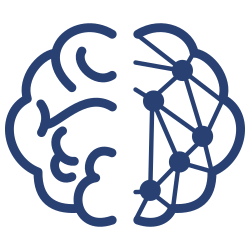NeuroFedora: towards a ready to use Free/Open source environment for neuroscientists
- #Community, #Computational neuroscience, #Fedora, #Free software, #Linux, #NEST, #Neuron, #Numpy, #Pandas, #Planet, #Python, #Reproducible research, #Sumatra, #TeX, #NeuroFedora
I've recently resurrected the NeuroFedora SIG. Many thanks to Igor and the others who had worked on it in the past and have given us a firm base to build on.
The goal
The (current) goal of the NeuroFedora SIG is to make Fedora an easy to use platform for neuroscientists. We aim to do this by making commonly used Neuroscience software easily installable on a Fedora system.
Neuroscience is an extremely multidisciplinary field. It brings together mathematicians, chemists, biologists, physicists, psychologists, engineers (electrical and others), computer scientists and more. A lot of software is used nowadays in Neuroscience for:
- data collection, analysis, and sharing
- lots of image processing (a lot of ML is used here, think Data Science)
- simulation of brain networks (NEURON, Nest, Moose, PyNN, Brian)
- dissemination of scientific results (peer reviewed and otherwise, think LaTeX)
Given that a large proportion of neuroscientists are not trained in computer science, a lot of time and effort is spent setting up systems, installing software (often building whole dependency chains from source). This can be hard for people not well-versed in build systems and so on.
So, at NeuroFedora, we will provide a ready to use Fedora based system for neuroscientists to work with, so they can quickly get their environment set up and work on the science.
Why Fedora?
For one, I have been a contributor for a while and know the community and the infrastructure quite well. That applies to me and others from the Fedora community that may work on this and not the research community in general.
Technically, there are many advantages of using Fedora as a base. Fedora is closely linked to the Red Hat Enterprise Linux eco system---which Cent OS is a part of and Scientific Linux is is based on too (Recently, CoreOS also joined the Red Hat family). RPM based systems are commonly deployed in supercomputers and clusters. So, making this software available on Fedora also makes it simpler to make it available on these systems. Additionally, the Fedora community is promoting Flatpaks, and working to permit multiple versions of software via the modularity system. Fedora also supports Docker very well.
Join us!
Packaging software is only one way in which one can contribute. Writing docs and answering questions about the software in NeuroFedora are other ways too, for example. If you are interested in neuroscience and in promoting Open Science, please consider joining the SIG. You can get in touch with us via one of our many communication channels.
This invitation extends to all--undergraduates, post-graduates, trainee researchers (PhD candidates like me), professional researchers, hobbyists, and everyone else. If you work in the field already, it is a great way of supporting the research community. For others, it is a great place to learn about neuroscience, and Free Software and the various technical skills that go into developing software.
Current status
We track the software we are working on here. A lot of software is now ready to use in Fedora. This includes various Python libraries and simulators such as Nest and Moose. Neuron, Brian, and PyNN are all in the pipeline. All of TeX Live is also available in Fedora. If there is other Free/Open source software that you use which isn't on our list, please let us know. If you can help maintain it with us, that'll be even better.
Fedora/Free software and Science
Open science shares the philosophy of FOSS. The data, the tools, the results, should be accessible to all to understand, use, learn from, and develop. More and more researchers are making it a point to keep Science as open as possible whether it is to do with the tools or dissemination of their findings. NeuroFedora hopes to aid this movement. Come, join us!

Comments